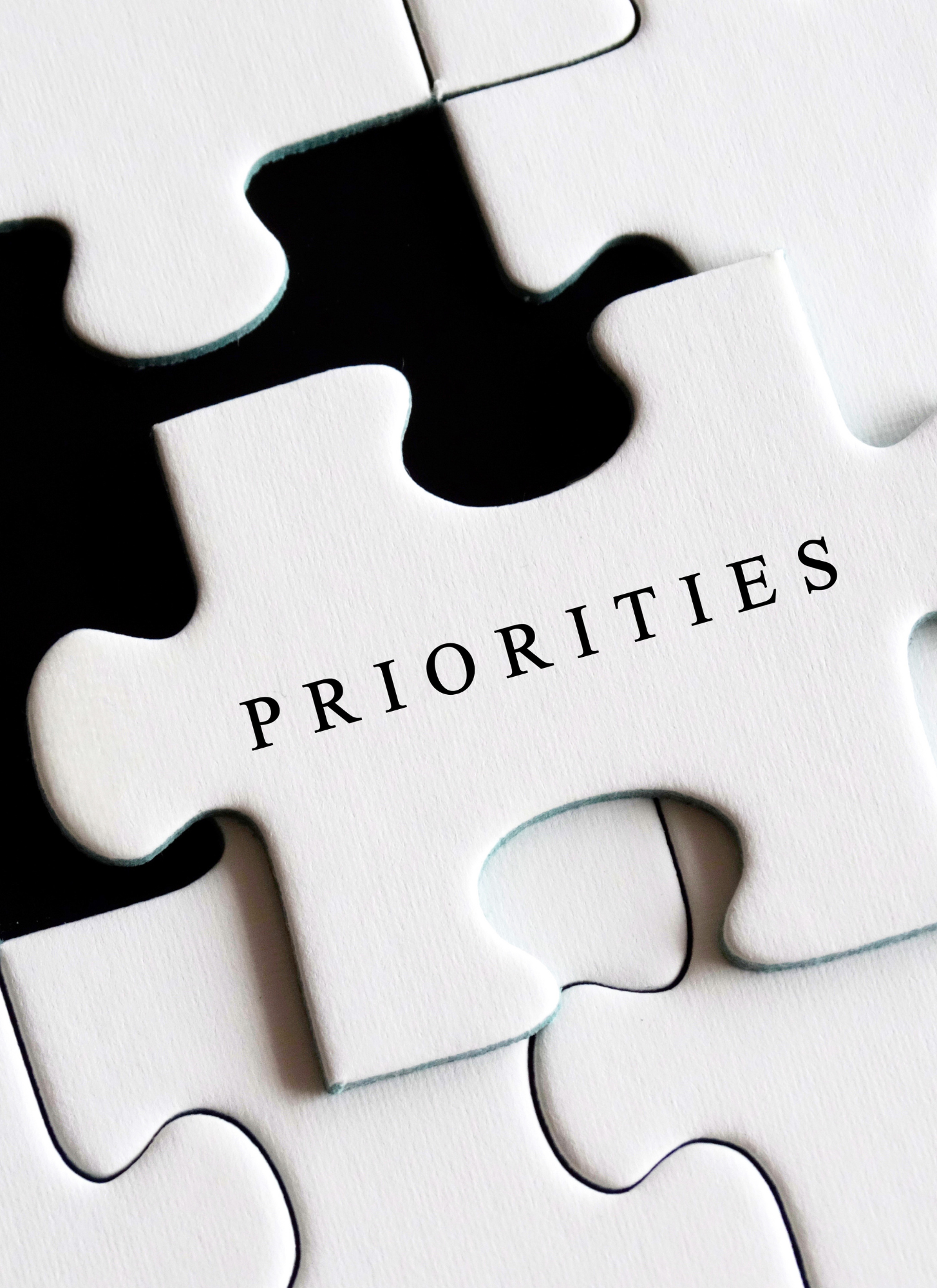Priority Management
Realizing our priorities can feel like trying to hit a moving target. Even if that's the reality, here are some best practices that have worked for my clients and may work for you. 𝘞𝘩𝘢𝘵'𝘴 𝘮𝘰𝘴𝘵 𝘪𝘮𝘱𝘰𝘳𝘵𝘢𝘯𝘵 𝘪𝘴 𝘵𝘰 𝘦𝘴𝘵𝘢𝘣𝘭𝘪𝘴𝘩 𝘢 𝘮𝘦𝘵𝘩𝘰𝘥𝘰𝘭𝘰𝘨𝘺 𝘵𝘩𝘢𝘵 𝘺𝘰𝘶'𝘭𝘭 𝘢𝘤𝘵𝘶𝘢𝘭𝘭𝘺 𝘶𝘴𝘦.
1️⃣ 𝗖𝗹𝗮𝗿𝗶𝗳𝘆 𝗚𝗼𝗮𝗹𝘀
Outline your long-term goals and align them with your values. This provides a guiding compass. (Covey, S. R., 1989. The 7 Habits of Highly Effective People.)
2️⃣ 𝗗𝗲𝗳𝗶𝗻𝗲 𝗮 𝗙𝗿𝗮𝗺𝗲𝘄𝗼𝗿𝗸
Choose a supporting framework like the Eisenhower Matrix (urgent vs. important), the ABC method (A: critical, B: important, C: optional), or the Pareto Principle (80/20 rule). (Eisenhower, D. D., 1954. Urgent is not important. The Saturday Review.) Here's a framework resource you may find helpful: Priority Matrix.
3️⃣ 𝗖𝗿𝗲𝗮𝘁𝗲 𝗮 𝗧𝗮𝘀𝗸 𝗟𝗶𝘀𝘁
Capture all your tasks to avoid overlooking what's important. This helps prevent overcommitting and neglecting priorities. (Fiore, K., 2007. The Organized Executive: Time Management Skills and Techniques for Real Leaders.)
4️⃣ 𝗔𝗻𝗮𝗹𝘆𝘇𝗲 𝗧𝗮𝘀𝗸𝘀
Consider the urgency, importance, complexity, and required resources for each task. Identify tasks that can be delegated, eliminated, or rescheduled. (Tracy, B., 2004. Eat That Frog!: 21 Great Ways to Stop Procrastinating and Get More Done.)
5️⃣ 𝗦𝗰𝗵𝗲𝗱𝘂𝗹𝗲 𝗥𝗲𝗮𝗹𝗶𝘀𝘁𝗶𝗰𝗮𝗹𝗹𝘆
Block time for high-priority tasks in your calendar, considering their estimated duration and potential interruptions. (Newport, C., 2016. Deep Work: Rules for Focused Success in a Distracted World.)
6️⃣ 𝗦𝗮𝘆 𝗡𝗼 𝗚𝗿𝗮𝗰𝗲𝗳𝘂𝗹𝗹𝘆
Learn to politely decline requests that don't align with your priorities. Be upfront and suggest alternative solutions if possible. (Niinikoski, D., 2022. Say No with Confidence: How to Set Boundaries and Protect Your Time.)
7️⃣ 𝗥𝗲𝘃𝗶𝗲𝘄 𝗮𝗻𝗱 𝗔𝗱𝗮𝗽𝘁
Regularly revisit your priorities and adjust as needed. Be flexible and willing to reschedule or delegate tasks. (Drucker, P. F., 1995. Managing in the Next Millennium: The Age of Information and Its Implications for Society and Economy.)
8️⃣ 𝗨𝘀𝗲 𝗣𝗿𝗼𝗱𝘂𝗰𝘁𝗶𝘃𝗶𝘁𝘆 𝗧𝗼𝗼𝗹𝘀
Leverage technology to organize tasks, set reminders, and track progress. (Babauta, Z., 2019. The Zen to Done Manifesto: Simplify Productivity and Achieve More with Less.)
9️⃣ 𝗧𝗮𝗸𝗲 𝗕𝗿𝗲𝗮𝗸𝘀 𝗮𝗻𝗱 𝗠𝗮𝗻𝗮𝗴𝗲 𝗦𝘁𝗿𝗲𝘀𝘀
Prioritizing your well-being is crucial. Avoid burnout by scheduling breaks, engaging in activities you enjoy, and maintaining healthy boundaries. (Goleman, D., 1998. Working with Emotional Intelligence.)
🔟 𝗖𝗲𝗹𝗲𝗯𝗿𝗮𝘁𝗲 𝗔𝗰𝗵𝗶𝗲𝘃𝗲𝗺𝗲𝗻𝘁𝘀
Recognize and reward your progress, however small. This reinforces positive habits and motivates you to continue prioritizing effectively. (Amabile, T. M., 1997. The progress principle: Using small wins to ignite joy, engagement, and creativity at work.)

